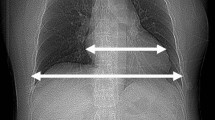Abstract
Aim
To determine the influence of weight, height, gender, age, heart rate, and blood pressure on count rate in cadmium-zinc-telluride single-photon emission computed tomography (CZT SPECT) gated radionuclide angiography.
Method
A total of 1,065 eligible patients referred for routine assessment of left ventricular ejection fraction were registered from August 2015 to November 2016. Data were recorded on heart rate, systolic and diastolic blood pressure, age, gender, height, weight, and count rate. All radionuclide angiographies were performed on a dedicated cardiac CZT SPECT camera, GE Discovery 530c. A dose of 550 MBq 99mTc-labeled human serum albumin was administered intravenously to each patient.
Results
Count rate varied from 1.2 to 8.9 counts per second. All test variables were significantly associated with count rate. From the preliminary analysis, weight appeared as the main contributing factor for explaining the variations in count rate with and R2 of 0.68.
A model consisting of weight, height, gender, and age explains 75% of the variance in count rate.
Conclusion
Patient height, weight, gender, and age have significant impact on count rate when performing CZT radionuclide angiography and may subsequently be used for individualized planning of tracer dosage.



Similar content being viewed by others
Abbreviations
- CZT:
-
Cadmium-zinc-telluride
- LVEF:
-
Left ventricular ejection fraction
- ALARA:
-
As low as reasonably achievable
- MPI:
-
Myocardial perfusion imaging
- ARSAC:
-
The Administration of Radioactive Substances Advisory Committee
- SPECT:
-
Single-photon emission computed tomography
References
Foley TA, Mankad SV, Anavekar NS, Bonnichsen CR, Morris MF, Miller TD, et al. Measuring left ventricular ejection fraction-techniques and potential pitfalls. Eur Cardiol Rev 2012;8:108-14.
Yeh ETH, Bickford CL. Cardiovascular complications of cancer therapy: Incidence, pathogenesis, diagnosis, and management. J Am Coll Cardiol 2009;53:2231-47.
Mitra D, Basu S. Equilibrium radionuclide angiocardiography: Its usefulness in current practice and potential future applications. World J Radiol 2012;4:421-30.
Hesse B, Lindhardt TB, Acampa W, Anagnostopoulos C, Ballinger J, Bax JJ, et al. EANM/ESC guidelines for radionuclide imaging of cardiac function. Eur J Nucl Med Mol Imaging 2008;35:851-85.
Folland ED, Hamilton GW, Larson SM, Kennedy JW, Williams DL, Ritchie JL. The radionuclide ejection fraction: A comparison of three radionuclide techniques with contrast angiography. J Nucl Med 1977;18:1159-66.
Haarmark C, Haase C, Jensen MM, Zerahn B. Pre-chemotherapy values for left and right ventricular volumes and ejection fraction by gated tomographic radionuclide angiography using a cadmium–zinc–telluride detector gamma camera. J Nucl Cardiol 2016;23:87-97.
Jensen MM, Haase C, Zerahn B. Interstudy repeatability of left and right ventricular volume estimations by serial-gated tomographic radionuclide angiographies using a cadmium–zinc–telluride detector gamma camera. Clin Physiol Funct Imaging 2015;35:418-24.
Duvall WL, Croft LB, Godiwala T, Ginsberg E, George T, Henzlova MJ. Reduced isotope dose with rapid SPECT MPI imaging: Initial experience with a CZT SPECT camera. J Nucl Cardiol 2010;17:1009-14.
Jensen MM, Schmidt U, Huang C, Zerahn B. Gated tomographic radionuclide angiography using cadmium–zinc–telluride detector gamma camera; comparison to traditional gamma cameras. J Nucl Cardiol 2014;21:384-96.
Acampa W, Buechel RR, Gimelli A. Low dose in nuclear cardiology: state of the art in the era of new cadmium–zinc–telluride cameras. Eur Heart J Cardiovasc Imaging 2016;17:591-5.
Lindner O, Pascual TNB, Mercuri M, Acampa W, Burchert W, Flotats A, et al. Nuclear cardiology practice and associated radiation doses in Europe: Results of the IAEA Nuclear Cardiology Protocols Study (INCAPS) for the 27 European countries. Eur J Nucl Med Mol Imaging 2016;43:718-28.
International Atomic Energy Agency, Office IL, International Organization for Medical Physics, Pan American Health Organization, World Health Organization, Medicine WFON, et al. Applying radiation safety standards in nuclear medicine. 2005.
Khong P-L, Ringertz H, Donoghue V, Frush D, Rehani M, Appelgate K, et al. ICRP Publication 121: Radiological protection in paediatric diagnostic and interventional radiology. Ann ICRP 2013;42:1-63.
van Dijk JD, Jager PL, Mouden M, Slump CH, Ottervanger JP, de Boer J, et al. Development and validation of a patient-tailored dose regime in myocardial perfusion imaging using CZT-SPECT. J Nucl Cardiol 2014;21:1158-67.
van Dijk JD, Jager PL, Ottervanger JP, de Boer J, Oostdijk AHJ, Engbers EM, et al. Development and validation of a patient-tailored dose regime in myocardial perfusion imaging using conventional SPECT. J Nucl Cardiol 2016;23:134-42.
Notghi A, Williams N, Smith N, Goyle S, Harding LK. Relationship between myocardial counts and patient weight: Adjusting the injected activity in myocardial perfusion scans. Nucl Med Commun 2003;24:55-9.
Cerqueira MD, Allman KC, Ficaro EP, Hansen CL, Nichols KJ, Thompson RC, et al. Recommendations for reducing radiation exposure in myocardial perfusion imaging. J Nucl Cardiol 2010;17:709-18.
Notghi A, Sundram FX, O’Brien JW, Smith NB. Assessing the effect of increasing injection activity for myocardial perfusion imaging in overweight patients. BJR 2008;81:730-4.
Fazel R, Krumholz HM, Wang Y, Ross JS, Chen J, Ting HH, et al. Exposure to low-dose ionizing radiation from medical imaging procedures. N Engl J Med 2009;361:849-57. https://doi.org/10.1056/NEJMoa0901249.
Author information
Authors and Affiliations
Corresponding author
Ethics declarations
Disclosure
The authors declare that they have no conflicts of interest.
Additional information
The authors of this article have provided a PowerPoint file, available for download at SpringerLink, which summarises the contents of the paper and is free for re-use at meetings and presentations. Search for the article DOI on SpringerLink.com.
Electronic supplementary material
Below is the link to the electronic supplementary material.
Rights and permissions
About this article
Cite this article
Rydberg, J., Andersen, J., Haarmark, C. et al. The influence of anthropometric and basic circulatory variables on count rate in cadmium-zinc-telluride SPECT gated radionuclide angiography. J. Nucl. Cardiol. 26, 1974–1980 (2019). https://doi.org/10.1007/s12350-018-1402-9
Received:
Accepted:
Published:
Issue Date:
DOI: https://doi.org/10.1007/s12350-018-1402-9




